Worldwide, the first appointee to a Chair of General Practice was at the University of Edinburgh in 1963. Robert Scott's Chair was funded by a bequest from the estate of the Scottish general practitioner, Sir James Mackenzie, who had achieved renown through his research into the rhythms of the heart.1 This world-first appointment preceded a rising community concern about the shortage of general practitioners in the Western world and about the importance of training medical students in general practice.2-4 In North America, the first Professors of Family Medicine were appointed at Penn State University (1967) and the University of Western Ontario (1968).
In Australia, the Whitlam government commissioned an inquiry on the "Expansion of Medical Education in Australia", chaired by Professor Peter Karmel, a Professor of Economics and Foundation Vice-Chancellor of the Flinders University of South Australia. The other six members of the Committee came from a background of obstetrics, medicine, neurology, and hospital administration, and included a Commonwealth statistician and the Queensland Auditor-General. The Karmel Committee reported that exposure to general practice was an essential part of the training of all medical students.5 The Commonwealth government then allocated, for the first time, specifically dedicated funds for the development of "community practice" within Australian universities.
Despite strong representation from the Royal Australian College of General Practitioners (RACGP), the Karmel Committee was not convinced that general practice should be regarded as an intellectual discipline in its own right. It recommended that general practice be taught as a subject in academic departments of community medicine, with "community practice" as its practical application.5 This semantic confusion led to the different medical schools placing varying degrees of emphasis on the place of general practice within the wider field of community medicine and public health, which was already well-established in some universities.
Although some information has been published about academic general practice6-8 and about individual foundation professors of community practice,9-13 there has been no study of the group as a whole. In this article, I describe our biographical details and some of our personal views.
All nine foundation professors of "Community Practice" were appointed between 1974 and 1976 and took up their positions within the next 12 months (Box). Four of the nine came from a background of general practice, three from primary medical care in developing countries and two were specialist physicians with experience and interest in public health. Six had held subprofessorial university appointments and one had been a full-time hospital administrator. Their primary professional qualifications were FRACGP and FRACP (3), FRACGP (3), FRACP (3), and five held a university doctorate. Three of the new professors had started their careers in general practice in New Guinea, and two had worked closely with Aboriginal communities in New South Wales. Four had been active in the politics, research committee or examination of the RACGP and two had been state presidents and federal councillors of the Australian Medical Association. Their direction and that of their department was largely influenced by their background and whether their university already had an active Department of Public Health.
All nine foundation professors bemoaned their lack of curriculum time, staff, accommodation, research and teaching money, and their inability to get a fair share of the resources available to the longer-established and "more mainstream" departments and their faculties. Two of the professors were very conscious of a lack of collegiality from members of other departments, describing these established academics as "resource bullies". Professor Eric Saint, then Dean of the Faculty of Medicine at the University of Queensland, made similar remarks in his 1981 review of the new departments, commissioned by the Tertiary Education Commission. He thought the solution lay with the existence of a friendly dean.14 Most of the professors found their deans helpful and supportive, but three found them disinterested or even hostile to general practice and community medicine.
Four of the professors commented on departmental instability due to personalities "adept at the art of white-anting" (ie, undermining). Also, three hybrid departments had structural difficulties that led to disagreement about aims and resources. One professor described his experience as "cruelly caught between the sociologists on the left and the GPs on the right".
Political activity from ACRRM resulted in a series of reviews on the future of vocational training.15 The reviews' recommendations resulted in the then Minister of Health, Dr Wooldridge, removing the RACGP Training Program's monopoly on vocational training (from 2002) and putting it out to tender by regional consortia. Most foundation professors saw the current process as an expensive "mess". Three could see no value or advantage in the change, but another three saw it as an opportunity to correct the long-missed opportunity of a vertically integrated educational program.
General and "community" practice was born to struggle within medical schools. It was unlike new medical specialties that were based on new knowledge or new technology. It was person- rather than disease-oriented and was set up to teach and research outside of teaching hospitals. It was a medical education reform movement: a threatening counter-culture to the established basic science and hospital-based clinical departments. It also began at a time of diminishing resources for universities.
There is little doubt that we as foundation professors have been agents of educational change within our medical schools. We have systematically introduced students to community-based medical care, which is where most patients receive most of their care most of the time. We have helped students to focus on the most common disorders, given them strategies to avoid missing serious disease and legitimised a preventive and community perspective to the doctor's role. This includes the role of doctors in helping to tackle the healthcare needs of people who are underserved in our community. We have also been pathfinders in affirmative entry to medical school for those who were previously under-represented, such as rural high school students. Our departments or disciplines are small and, apart from those students who spend up to a year in rural clinical schools, the proportion of our share of curriculum time is in the single digits.7 But we do have a strong, positive influence in medical schools. A medical school without such a discipline would not achieve accreditation from the Australian Medical Council.16
Our prime motive in joining academia was to make a difference to medical education and through that to the amount and quality of the medical care of the Australian population. We had to fight hard for the right to do the job for which we had been appointed. Nevertheless, we also had the opportunity and the privilege to make change happen. Medical schools are better than they were in their focus on consultation skills, equity and in the relevance of their curricula.
The Karmel Committee's doubts about the academic credibility of general practice have been disproven and the meaningless compromise term "community practice" has disappeared. All the medical schools have a general practice entity and the number of full Professors of General Practice has risen from 1 in 1977 to 15 in 2003.
By the end of 2003, all the foundation professors will have retired from their university chairs and, to quote Norelle Lickiss, "we are but threads in the fabric of mankind". This article records something of our struggles, joys and triumphs. It could be a starting point for future professors of community medicine, general practice or primary care to consider before they take up the shuttle to add their thread to the rich tapestry of Australia's medical endeavour.
The foundation professors, qualifications at appointment, original titles, universities and years of service
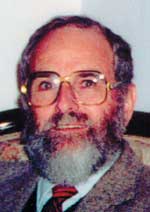 Charles Bridges-Webb MD, FRACGP Community Medicine Sydney 1975–1994 |
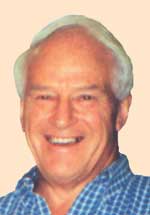 Neil Edwin Carson FRACGP, FRACP Community Medicine Monash 1975–1993 |
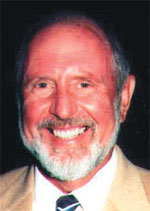 Max Kamien MD, FRACP, MRCP, FRACGP, DPM, DCH General Practice Western Australia 1977–2003 |
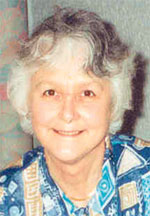 Jean Norelle Lickiss MD, MRACP, FRCP, BMedSc, DTM&H Community Health Tasmania 1975–1983 |
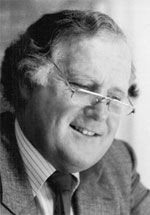 Timothy George Murrell MD, FRACGP, DTM&H, CLJ Community Medicine Adelaide 1975–1994 |
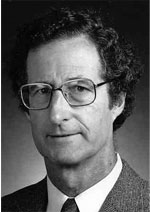 Anthony James Radford FRCP, MRCP, FRACP, MFCM, SM, DTM&H Primary Health Care Flinders 1975–1994 |
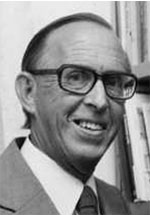 James Geoffrey Ryan BSc, FRACGP Community Practice Queensland 1975–1986 |
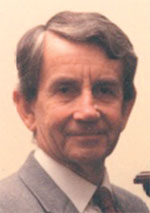 Ian William Webster MD, FRACP Community Medicine New South Wales 1975–2001 |
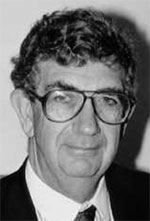 Ross Wharton Webster FRACGP, MRACP Community Health Melbourne 1974–1989 |
- Max Kamien1
- Department of General Practice, University of Western Australia, Claremont, WA.
I thank all the foundation professors for their support of this article and their diligence in answering my questions. Not all of these professors agree with every interpretation expressed here. Thanks also to Mr Geoffrey Hall and Associate Professor Robert Moorhead for their editorial assistance.
None identified.
- 1. Moorhead R. Sir James Mackenzie (1853–1925): views on general practice education and research. J R Soc Med 1999; 92: 38-43.
- 2. Millis JS, chairman. The graduate education of physicians: the report of the Citizens Commission on Graduate Medical Education. Chicago: American Medical Association, 1966.
- 3. Willard WR, chairman. Meeting the challenge of family practice: the report of the Ad Hoc Committee on Education for Family Practice of the Council on Medical Education. Chicago: American Medical Association, 1966.
- 4. Lord Todd, chairman. Report of the Royal Commission on Medical Education, 1965–1968, London: HMSO, 1968.
- 5. Karmel P, chairman. Report of the Committee on Medical Schools to the Australian Universities Commission. Expansion of medical education. Canberra: AGPS, 1973.
- 6. Kamien M, MacAdam DB. Academic general practice in Australian medical schools. Med J Aust 1991; 154: 395-400.
- 7. Kamien M. Has Australian academic general practice really come of age? Med J Aust 2001; 175: 81-83.
- 8. Ward AM, Lopez DG, Kamien M. General practice research in Australia, 1980–1999. Med J Aust 2000; 173: 608-611.
- 9. Neil Edward Carson. Academic general practitioner, leader and achiever. Aust Fam Physician 1992; 21: 800-803.
- 10. Charles Bridges-Webb. Academic general practitioner and epidemiologist. Aust Fam Physician 1992; 21: 988-990.
- 11. Dr Max Kamien. Academic general practitioner and champion of rural practice. Aust Fam Physician 1993; 22: 1069-1075.
- 12. Moss J. Timothy Murrell. The general practitioner as human ecologist. Aust Fam Physician 1994; 23: 2189-2193.
- 13. Murrell DB, Moorhead RG. Timothy George Calvert Murrell [obituary]. Med J Aust 2003; 178: 33.<eMJA full text>
- 14. Saint E. Community practice in Australian medical schools: tertiary education commission evaluative studies program. Canberra: AGPS, 1981: 20.
- 15. Hays R, Piterman L. Education and training for general practitioners. General practice in Australia: 2000. Canberra: Department of Health and Aged Care, 2000; 347-382. Available at: http://www.health.gov.au/gpconnections/pdf/chpten.pdf (accessed May 2003).
- 16. Hamilton JD, Vandewerdt JM. The accreditation of undergraduate medical education in Australia. Med J Aust 1990; 153: 541-545.





Abstract
The 1973 inquiry into the "Expansion of Medical Education in Australia" resulted in the appointment of nine professors of "Community Practice".
We (the foundation professors) have been leaders in a reform movement within medical schools and general practice and have had to fight hard for the right and resources to do the job for which we were appointed.
Our most significant accomplishment has been to broaden the orientation of medical education beyond hospitals and laboratories to the community and those in the community who are underserved.
Although small in numbers, our discipline fights above its weight and is essential for medical school accreditation by the Australian Medical Council.